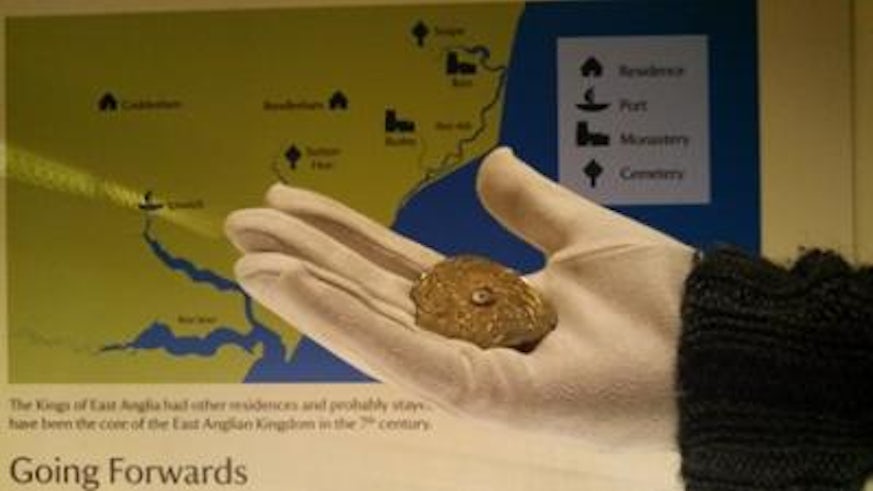Anglo-Saxon royal village discovered
11 Mawrth 2014

Archaeologists in Suffolk have found conclusive evidence of the long-lost Anglo-Saxon royal settlement whose people buried their kings at Sutton Hoo.
The royal settlement at Rendlesham is mentioned by the Venerable Bede in his 8th century work An Ecclesiastical History of the English People, but was not located until now.
Co-director and academic advisor on the project, Professor Christopher Scull, from the School of History, Archaeology and Religion and University College London said: "The survey has identified a site of national and indeed international importance for the understanding of the Anglo-Saxon elite and their European connections. The quality of some of the metalwork leaves no doubt that it was made for and used by the highest ranks of society. These exceptional discoveries are truly significant in throwing new light on early East Anglia and the origins of Anglo-Saxon kingdoms."
A team of skilled metal detector users have been working for the last five years on farmland, four miles north-east of the Sutton Hoo burial site, where a diverse range of finds have been discovered. These include fragments of exquisite gold jewellery, Saxon pennies and weights associated with trade, and metal offcuts from a smith's workshop.
Archaeologists have used metal-detecting, aerial photography, chemical analysis and geophysics – a process of scanning the ground beneath the surface for evidence of buried features – to locate the 50 ha Anglo-Saxon site within a survey area covering up to 160ha.
The National Trust will host a small exhibition of the finds, Rendlesham Rediscovered, in its visitor centre at Sutton Hoo. The finds going on display comes in what is already an exciting year for Sutton Hoo, as the National Trust celebrates 75 years since Basil Brown discovered the original Anglo Saxon burial site.
The survey has revealed human occupation and activity at Rendlesham from late prehistory up to the modern day, with a particularly large, rich and important settlement there during the early to middle Anglo-Saxon period. This means it would have been inhabited during the early 7th century, at the same time that the internationally-famous burial mounds were built at Sutton Hoo.
The National Trust exhibition at Sutton Hoo will run from Saturday 15 March through to October.
Martin Payne, the National Trust's Learning and Interpretation Officer at Sutton Hoo said: "This exhibition will, for the first time, allow people to rediscover Anglo-Saxon Rendlesham and gain further insight into the Anglo-Saxons who buried their kings at Sutton Hoo. It is a unique and exciting opportunity to find out about how those kings and their dependents spent their days and lived their lives. It is a relatively small exhibition, with around 70 small objects on show, but the finds are of huge historical and archaeological significance and well worth seeing. Looking at these objects up close you really do get a feel for the people who once lived here, more than 1,300 years ago."
The new discoveries are being temporarily housed at Sutton Hoo before moving to a new, purpose-built permanent exhibition space at Ipswich Museum.
The archaeological survey project has been funded and sponsored by Suffolk County Council, the Sutton Hoo Society and English Heritage, with a substantial input of volunteer time. The temporary exhibition display has been funded and is hosted by the National Trust.